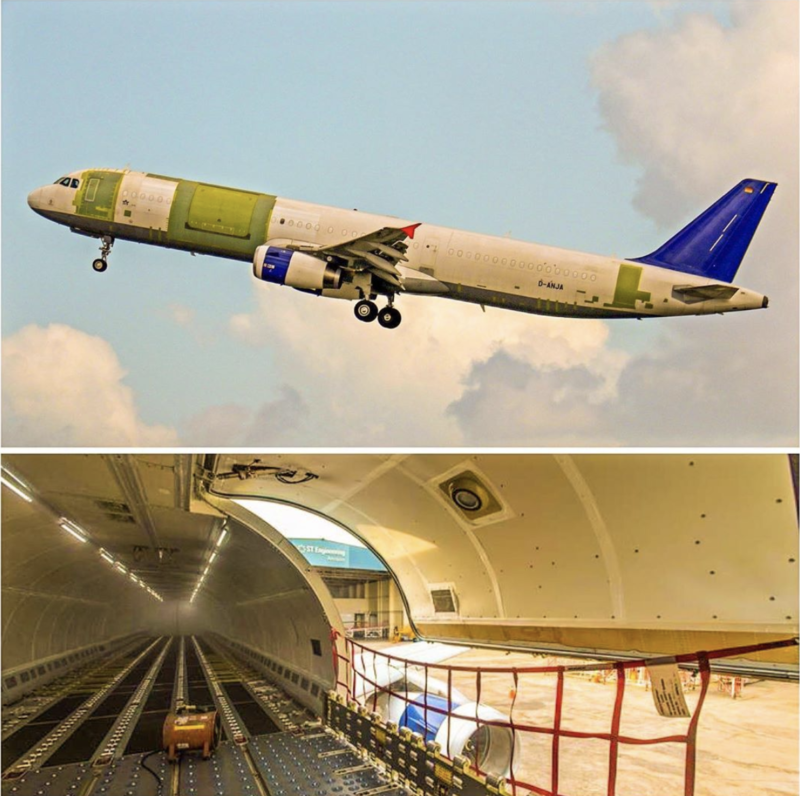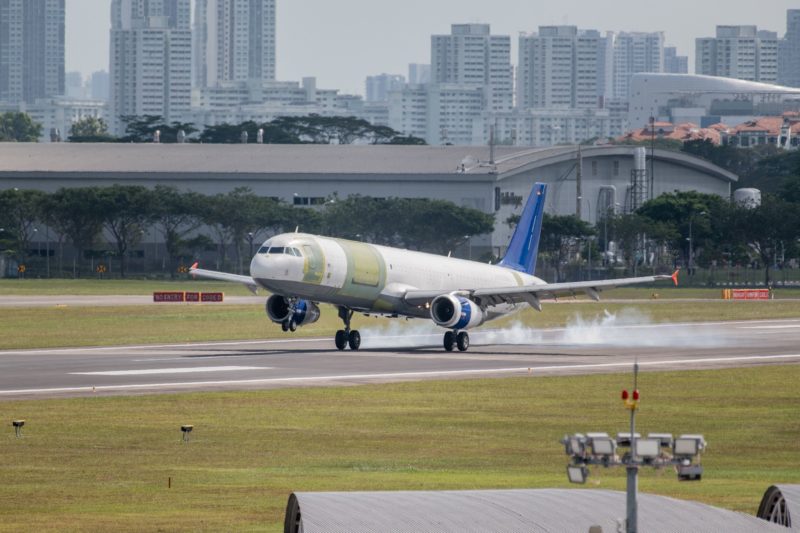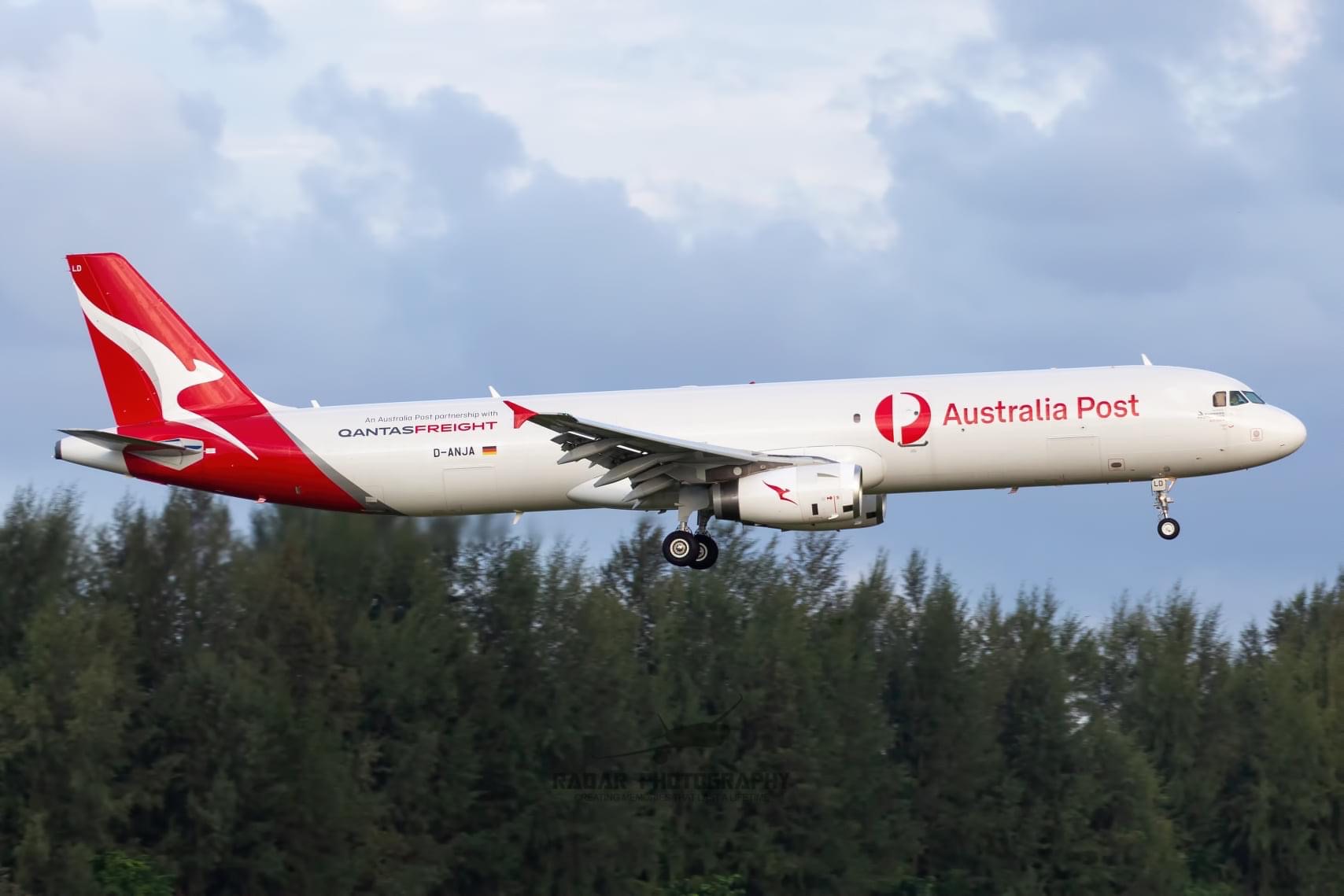The first Airbus A321P2F (Freighter) has been spotted with a Qantas Freight livery in Singapore. The program allows Airbus A321s, that have completed their operational service carrying passengers for airlines, to have a second life as highly efficient freighters.
D-ANJA, which will eventually be registered as VH-ULD, is a 22-year-old Airbus A321 which used to be passenger-configured. The aircraft has been converted by ST Engineering and Airbus in Singapore.
The A321P2F is a perfect replacement for the older generation of narrow-body freighters. With space for 14 large containers/pallets on the main deck and 10 LD3-type containers on the lower deck, it is the most cost-efficient freighter in its category available today. It also is more environmentally friendly through a much lower fuel burn and reduced emissions.

Modifying an A321 from passenger to the P2F version involves integrating a large main deck cargo door in the forward fuselage, plugging the passenger windows and deactivating most of the passenger doors.
The forwardmost left passenger door is replaced by a smaller one to optimise the number of cargo positions on the main deck. The cabin is refurbished, including the installation of a rigid barrier wall, and the floor is reinforced.
Qantas signed an expanded partnership with Australia Post in August 2019, which will see them become the launch operator for the Airbus A321P2F.
From October 2020 Qantas will introduce up to three passenger to freighter (P2F) converted Airbus A321 aircraft, that will allow for greater cargo capacity.
Compared to their existing fleet of Boeing 737-300 Freighters, the A321P2F can carry around 50% more cargo; this equates to around nine extra tonnes.

Airbus figures show the A321P2F has a total payload capability of 27.9 metric tonnes over two decks. This consists of 10 containers on the lower deck and 14 on the main deck.
Depending on its configuration and payload, the aircraft is listed with a range of 2,300 nautical miles.
Feature Image: Jun You (via JetPhotos)


